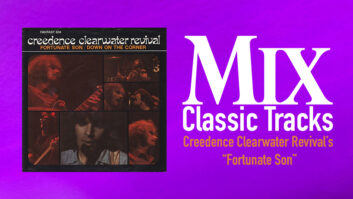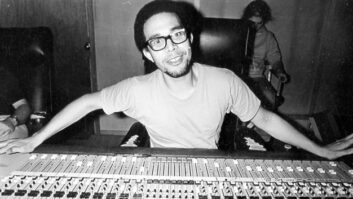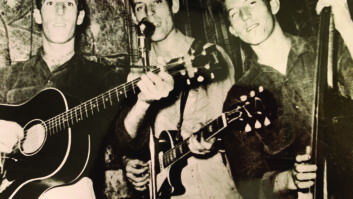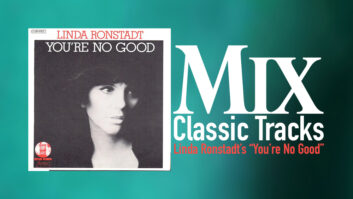
The story of Southern Avenue sounds a bit likea music industry fairy tale. In 2015, Ori Naftaly,a young Israeli guitarist ona pilgrimage to Memphis, forged a partnership with vocalist Tierinii Jackson and drummer Tikyra Jackson, sisters and musicians raised in the church tradition. Together with keyboardist and Stax Academy graduate Jeremy Powell and a jazz-inspired bassist, Daniel McKee,a band was formed, taking the city by storm with their ener- getic live shows and fresh take on Memphis blues.
Meanwhile, Concord Music Group president JohnBurk was hunting for a young local act for the revived Stax label. While working with Melissa Etheridge at Royal Studios, he connected with producer Kevin Houston, who had recently recorded an EP with Southern Avenue. Long story short, 18 months after forming, the quintet of twenty-somethings were signed to Stax; their self-titled album, released in February, debuted at Number One on the iTunes Blues chart.
Southern Avenue’s modern soundmelds gospel-infused R&B witha rootsy rock feel. The ten songs on the record—written mainly by Naftaly and Tierinii Jackson, with the exception of George Jackson’s classic “Slipped, Tripped, and Fell in Love”—followa timeline of the band’s experiences, from “Eighty Miles from Memphis” and “Don’t Give Up,” about Naftaly’s struggle to fulfill his musical dreams, to the end of the journey, the final track “Peace Will Come.”
Producer/engineer Houston, whose credits include Lucero and Patty Griffin, says he knew right away that he was onto something special. “They played me the songs, andI immediately heard what it needed to be like,” he says. “The lead single, ‘Don’t Give Up,’ when they started playing that to me, singing it,I heard the claps, and it was just so undeniable that it was powerful.”
That fall, the band recorded a five-track EP ina few days at Memphis’ Inside Sound, with the goal of generating interest at Memphis’ 2016 International Blues Challenge, where the band placed in the finals. Withina few months, Southern Avenue was signed and headed to Zebra Ranch, built by legendary Memphis producer and artist Jim Dickinson in Coldwater, Miss.,a rural hideaway 45 minutes south of Memphis. Housed ina converted barn adorned with musical relics and audio antiques, Zebra began asa family art project but has evolved over the years intoa nontraditional studio space.
“Jim Dickinson always said that production in absentia was the highest form of the art,” says Houston, who produced, engineered and mixed Southern Avenue. “He designed the studio, and you can’t help but be affected by his presence there.I wouldn’t say it’sa convenient place, but it really helps builda team aspect because you’re all out there in the middle of nowhere, and there’s nothing to do but makea record.”
“Going in there felt like going home,” adds Naftaly. “It felt good to have the privacy and focus. And on the other hand, you have the sound and the acoustics, and the equipment and all of the memorabilia—the awards, the interviews, newspaper stories from 40 years ago. It’s really inspiring, but not in a flashy way; in a real, raw kind of way.”
The majority of the album was tracked live to Pro Tools. Houston supplemented the gear at Inside Sound and Zebra—including the latter’s collection of Coles and RCA ribbon mics—with his own rig, which comprises API mic pre’s, 550b and 550a EQs, some Telefunken V72s, anda Neumann U87 that he sends through his custom JFL Audio MP F5 tube mic pre/compressor, designed by Frank Lacy in Oxford, Miss., and based loosely on the Universal Audio 176.
At both Inside Sound and Zebra, Houston set everyone up in the same space as much as possible, with vocalist Jackson ina separate room. Though there would be overdubs later, the key to the record, Houston figured, was centered around interfacing emotionally with her vocals.
Because they were recording to digital, Houston wanted to incorporate as many tubes in the signal chain as possible, choosing to send the lead vocal froma Telefunken AR-51 tube condenser, through his JFL Audio MP F5. “I trieda couple of different signal paths,” he explains. “She’s so dynamic thatI wanted something that was going to smooth out her voice as much possible.”
To record the first five tracks at Inside Sound, Naftaly’s guitar amp was placed in an iso booth. Bass was taken direct and was re-amped later, usinga Reamp V2 box intoa classic 1970s Ampeg B15 amp, miked with an EV RE20.

Zebra Ranch doesn’t have traditional iso booths; to control bleed Houston set Naftaly up in the bathroom. “If we knew we were going to make it live, we’d open up the doors and geta little more bleed, geta little more depth toa solo,” he says. Guitar amps were close-miked with an SM57 anda Royer 121; to overdub solos, Houston put upa Coles 4038 asa distant room mic.
Most guitar tracks were recorded live; Naftaly says he never wants to put anything ona record that he can’t re-create onstage. “Ina live show,I play one guitar;I change my pickups andI do whateverI do with my sound, but it’s stilla very live, rock ’n’ roll kind of sound, which is whatI wanted to do on the record.” He rotated six guitars in the studio, including Fenders froma custom shop in Memphis, and played through Fender or Vox amps.
Guest artist Luther Dickinson added slide toa few tracks, at Zebra: “Slide guitar overdubs were on an acoustic guitar with an old DeArmond pickup in the soundhole through a Fuchs boutique amplifier,” says Houston. “He selected the acoustic to allow him to play with the amount of feedback/sustain so as to make the slide guitar sing.” The amp was close-miked witha Sennheiser 421 anda Royer 121.
Horns add an iconic Memphis feel. On the track “What DidI Do?” recorded at Inside Sound, Houston worked around budget limitations by playing sax himself and bringing ina friend, Suavo Jones, on trombone. Those horns were recorded separately: Houston with his U87 and Jones witha Coles.
At Zebra, Houston brought in local heavyweights Art Edmaiston on sax and the Bo Keys’ Mark Franklin on trumpet, and employeda recording technique he picked up from Royal’s Boo Mitchell: “I make the blend on one microphone; we used an AKG 414. That’s what they do at Royal Studios. In this instance, we had two horn players, but they’ll get as many as four players around that one microphone and just move everybody around until they blend just right. Those guys havea great system where they’ll do trumpet and tenor ona pass, and then switch horns and doflugelhorns and bari sax on another pass. That’s how they get the big stack.”
Scheduling challenges meant some keyboard parts were recorded live and others were overdubbed. On the EP tracks, keyboards were recorded direct ona Yamaha Motif; at Zebra, Houston rented an organ. “We put the Leslie in it and set it in the entry foyer coming into the studio to isolate ita bit.” Later, when Houston remixed some of the EP tracks, he ended up re-amping those keyboard parts through a Leslie Combo. Drum miking varied on the two sessions: On the EP, mics included D112 on kick, SM57 on top and bottom snare, Sennheiser 441 on hi-hat and 421 on toms, with two AKG 414s as stereo overheads anda Coles 4038 mono room mic.
The mic breakdown at Zebra featured an EV ND 868 on inside kick, Yamaha sub kick on outside kick, SM 57 on top and bottom snare, 421 on toms, RCA 77DX for mono room and two Coles 4038 for stereo room tracks. “Once we hada budget through Stax, I had master drum tech Robert Hall rent us his amazing DW kit and lots of his choice snares and cymbals,” adds Houston.
Houston mixed the record at Memphis’ Music and Arts Studio on its API Vision console. The ten tracks sound cohesive despite being recorded in two facilities, months apart—partly because he used his own API line mixer and outboard gear on all of the sessions. Mastering was handled by Paul Blakemore at CMG, with vinyl cut by Jeff Powell at Sam Phillips Recording.
Houston says he wept when he put his test copy on his turntable. “I just couldn’t believe it sounded so good;I couldn’t believe it was going to be on Stax. It’s justa dream come true. This record encompasses blues, gospel, soul, R&B—and that’s what Memphis music is to me,a combination of all those things to combine something to make it new and fresh.”





